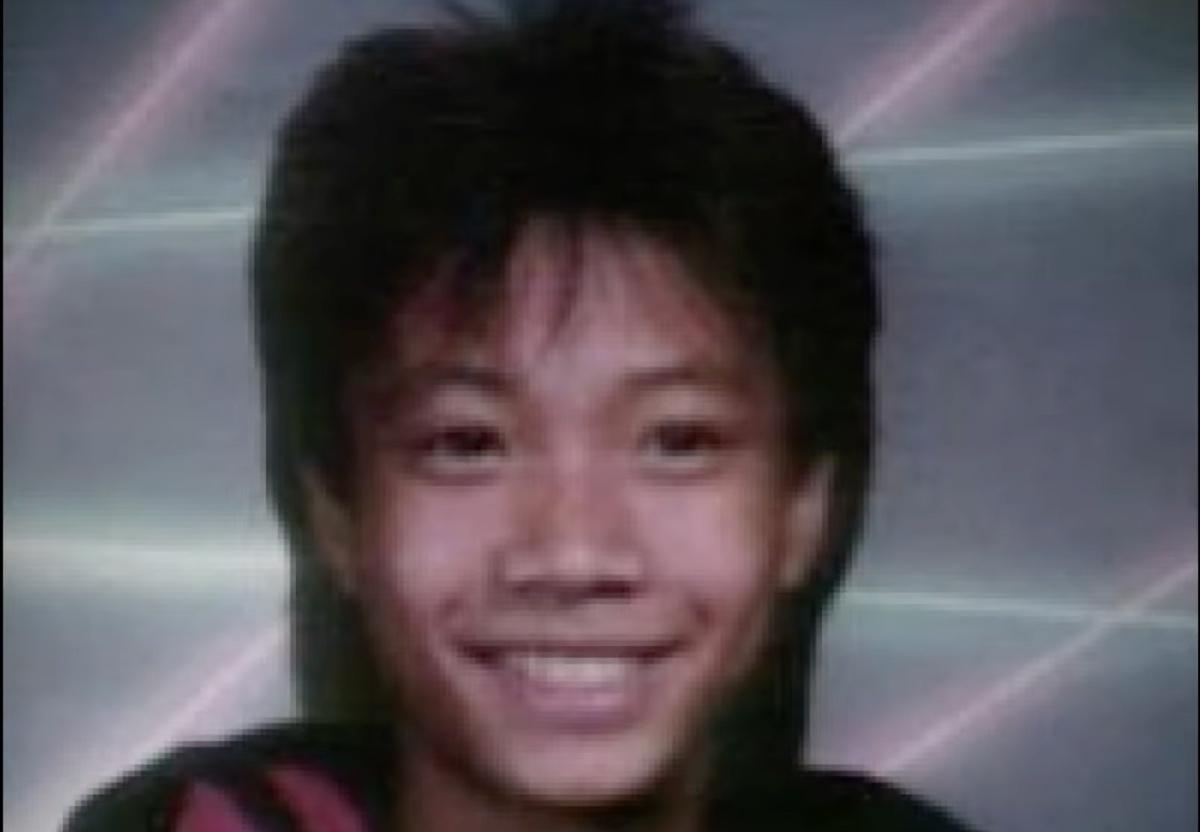Konerak Sinthasomphone: The Tragic Story Of A Missed Escape
The name Konerak Sinthasomphone is tragically etched into the annals of true crime, forever linked to the horrific acts of serial killer Jeffrey Dahmer. His story is one of profound loss, systemic failure, and the devastating consequences of societal indifference. It highlights not only the depravity of a murderer but also the critical shortcomings of the institutions meant to protect the vulnerable. Konerak's life, though brief, brought to light several critical issues, including police brutality, homophobia, and the desperate need for better mental health services, especially for marginalized youth. His harrowing experience, particularly the near-escape that turned into a fatal return, remains one of the most heartbreaking aspects of the Dahmer case.
This article delves into the life and tragic Konerak Sinthasomphone death, exploring the circumstances that led to his demise, the family's arduous journey to America, and the shocking police negligence that sealed his fate. We will also examine the enduring impact of this tragedy on his family and the broader community, ensuring that Konerak Sinthasomphone is remembered not just as a victim, but as a catalyst for uncomfortable yet necessary conversations about justice and accountability.
Table of Contents
- Biography: Konerak Sinthasomphone
- The Sinthasomphone Family's Arduous Journey
- A Fateful Encounter: Dahmer's Prior Assault on Somsack
- Konerak's Escape and the Critical Failure
- The Discovery and Lingering Questions
- The Aftermath: Protests and Investigations
- Remembering Konerak Sinthasomphone
- The Enduring Legacy of Tragedy
Biography: Konerak Sinthasomphone
Konerak Sinthasomphone was a young Laotian boy whose life was tragically cut short at the age of 14. He became known as the thirteenth victim of Jeffrey Dahmer, a notorious serial killer. Konerak's story is particularly poignant because of the circumstances surrounding his death, which involved a critical failure by law enforcement that allowed Dahmer to continue his horrific spree. His youth and the preventable nature of his demise underscore the profound injustice he suffered.
Personal Data: Konerak Sinthasomphone
| Attribute | Detail |
|---|---|
| Full Name | Konerak Sinthasomphone |
| Date of Birth | Unknown (born c. 1977) |
| Age at Death | 14 years old |
| Ethnicity | Laotian |
| Place of Birth | Laos |
| Immigration to U.S. | 1979/1980 |
| Date of Death | May 27, 1991 |
| Cause of Death | Murdered by Jeffrey Dahmer |
| Family Members | Parents (Somdy and Somsy Sinthasomphone), Brothers (Somsack, Anouke) |
| Known For | Thirteenth victim of Jeffrey Dahmer; central to police negligence scandal. |
The Sinthasomphone Family's Arduous Journey
The Sinthasomphone family's story began far from the grim streets of Milwaukee. Fleeing repression and seeking a better life, Konerak Sinthasomphone and his parents, Somdy and Somsy, along with his brothers Somsack and Anouke, left their farm near Vientiane in communist Laos. Their journey led them to the Nonkai refugee resettlement camp in Thailand. In 1979, with hope and the lure of living a happy life, they made the monumental decision to immigrate to the United States, arriving in Milwaukee in 1980. This move was driven by the universal desire for safety, opportunity, and a brighter future for their children. The youngest known victim of notorious serial killer Jeffrey Dahmer was a teenage Laotian boy who immigrated to the United States a decade prior. The family's challenging life in America, marked by cultural adjustments and economic struggles, would soon be overshadowed by an unimaginable tragedy, twice in less than three years, Jeffrey Dahmer, who has confessed to 17 killings, brought grief to the Sinthasomphone family.
A Fateful Encounter: Dahmer's Prior Assault on Somsack
The Sinthasomphone family's connection to Jeffrey Dahmer did not begin with Konerak. In a chilling precursor to the events of 1991, Dahmer had already brought immense grief to the family. In 1988, he sexually assaulted Konerak's older brother, Somsack Sinthasomphone. This incident, for which Dahmer apologized to the teenage boy, resulted in a conviction. Jeffrey Dahmer killed Konerak Sinthasomphone while he was still on probation for molesting the victim's brother, Somsack. This crucial detail highlights a severe systemic failure: Dahmer was a known offender with a history of similar crimes, yet he was still free to prey on others. Unknown to Dahmer, Sinthasomphone was the younger brother of the boy he had molested in 1988. The fact that Dahmer was on probation, yet managed to commit further heinous acts, including the murder of Konerak, underscores the tragic inadequacy of the monitoring and justice systems in place at the time. The family had already endured one traumatic encounter with Dahmer, making the subsequent loss of Konerak even more devastating and preventable.
Konerak's Escape and the Critical Failure
The circumstances surrounding Konerak Sinthasomphone's death are particularly agonizing because he almost got away. On the night of May 27, 1991, a heavily drugged Konerak Sinthasomphone escaped from Dahmer’s apartment at 924 North 25th Street. This was a critical moment, a window of opportunity for intervention that was tragically missed due to a series of shocking police failures. Konerak was incoherent, disoriented, and had blood seeping out of his rectum, making it clear to anyone who saw him that he was in dire need of medical attention and protection. His appearance alone should have triggered an immediate and thorough investigation.
- Jeanne Calment
- Actor Keith Powers
- African Braids
- Iran National Volleyball Team Next Match Time
- Dawkins Eagles
The Neighbors' Plea for Help
Konerak's desperate flight led him to the street, where he was spotted by concerned neighbors, including Sandra Smith and Nicole Childress. They immediately recognized his distress and the clear signs of abuse. These vigilant citizens alerted authorities, emphasizing the boy's severe condition and the suspicious behavior of the man who followed him, Jeffrey Dahmer. The neighbors' quick thinking and compassionate response provided a crucial chance to save Konerak Sinthasomphone's life. Their insistence that Konerak was a child, and their concern for his well-being, were direct pleas for help that should have been heeded. They acted as responsible members of the community, doing everything in their power to ensure the boy's safety.
Police Disregard and Fatal Consequences
Despite the clear evidence and the neighbors' urgent pleas, the responding Milwaukee police officers, John Balcerzak and Joseph T. Gabrish, made a catastrophic decision. They disregarded the visible signs of trauma, the incoherent state of Konerak, and the insistence from the concerned Black citizens that Konerak was a child. Instead of recognizing Konerak as a victim in dire need of help, they allowed Dahmer to convince them that Konerak was his adult lover, merely involved in a domestic dispute. This grave error was compounded by the fact that the police also disregarded information that a reported missing person, Konerak Sinthasomphone, was the victim in the May 27 incident. This was a direct result of homophobia and racial bias, causing them to disregard a call from a concerned Black citizen, shortly after Sinthasomphone was returned to Dahmer, in which the caller insisted that Sinthasomphone was a child. The officers even helped Dahmer escort the heavily drugged Konerak back into the apartment, where he would meet his gruesome end. Konerak Sinthasomphone was a Jeffrey Dahmer victim who almost got away, but due to this egregious negligence, his chance at survival was tragically stolen from him. This police failure is a stark reminder of how biases and lack of proper protocol can have fatal consequences.
The Discovery and Lingering Questions
Less than two years after Dahmer apologized for sexually assaulting the teenage boy, the family learned late Thursday that his younger brother, Konerak Sinthasomphone, 14, was found among 11 mutilated bodies in Dahmer's apartment. The discovery of Konerak Sinthasomphone's remains in Jeffrey Dahmer's apartment in July 1991 sent shockwaves through the community and brought the full horror of Dahmer's crimes to light. For the Sinthasomphone family, it was a second, unimaginable blow. The second ended with the mutilation death of a younger brother. The news confirmed their worst fears and ignited a fresh wave of grief and anger. Mr. Sinthasomphone, Konerak's father, was left asking why he had moved his family to America, a place they had sought for safety and opportunity, only to face such unspeakable tragedy. This question encapsulates the profound despair and betrayal felt by a family whose hopes were shattered by a monster and failed by the system. The gruesome murder of Konerak Sinthasomphone by the hands of Jeffrey Dahmer after Konerak’s family immigrated from Laos to the United States, he and his brother, Somsack, had a pretty challenging life. The discovery not only confirmed Konerak Sinthasomphone death but also exposed the magnitude of Dahmer's killing spree and the tragic police failures that enabled it.
The Aftermath: Protests and Investigations
The news of Konerak Sinthasomphone's death, particularly the details of the police's involvement, reverberated among the community, igniting a protest and triggering an investigation into how the police officers handled the case. The outrage was palpable, especially within Milwaukee's minority communities, who felt that the police's actions were indicative of systemic neglect and prejudice. The incident became a rallying cry against police brutality, homophobia, and racial bias within law enforcement. The community demanded accountability and reform, unwilling to let Konerak's tragic story be forgotten or dismissed.
Holding Officers Accountable
In the aftermath of Konerak Sinthasomphone’s death, the Milwaukee officers responsible for handing Sinthasomphone back to Dahmer — John Balcerzak and Joseph T. Gabrish — were suspended. While they were initially reinstated, public outcry and further investigation led to their eventual dismissal from the force. This decision, though a small measure of justice, highlighted the deep-seated issues within the police department. It was a clear acknowledgment that their actions, or inactions, directly contributed to Konerak's murder. The fight for accountability for Konerak Sinthasomphone's death was a difficult one, but it brought crucial attention to the need for police reform and unbiased law enforcement practices.
Systemic Failures Unveiled
Konerak Sinthasomphone's life and death brought to light several critical issues beyond just the individual officers' negligence. The case exposed the pervasive violence of white men like Dahmer, unchecked by a system that often fails to protect marginalized individuals. It revealed how homophobia within the police force contributed to the dismissal of a legitimate concern, as officers assumed a consensual adult relationship rather than investigating potential abuse. Furthermore, it underscored the need for better mental health services, both for potential victims and for addressing the root causes of such heinous crimes. Remembering Konerak Sinthasomphone is less a case study on the negligence of police or the pervasive violence of white men, though it is that. Rather, remembering Konerak Sinthasomphone means holding the past closer, even in this moment when there is already too much to mourn. His case became a stark example of how societal prejudices can lead to fatal oversights, emphasizing the urgent need for comprehensive reforms in policing and social services.
Remembering Konerak Sinthasomphone
Today, we delve into the lives of Konerak’s parents, who have fought tirelessly for justice and remembrance in the wake of their son’s senseless and heartbreaking death. The Sinthasomphone family, especially Konerak's parents, Somdy and Somsy, and his brother Anouke, have carried an unimaginable burden of grief. Their resilience in the face of such profound loss is a testament to their strength. They have fought tirelessly for justice and remembrance, ensuring that Konerak Sinthasomphone is not just another forgotten victim. The question Mr. Sinthasomphone asked about why he moved his family to America continues to echo, a painful reminder of the broken promise of safety. Konerak Sinthasomphone's life was cut short when he was murdered by Jeffrey Dahmer in 1991, but his memory lives on through the efforts of his family and those who continue to advocate for a more just and equitable society. Remembering Konerak Sinthasomphone means acknowledging the systemic failures that contributed to his demise and committing to prevent such tragedies from recurring.
The Enduring Legacy of Tragedy
The Konerak Sinthasomphone death remains a potent symbol of police negligence, racial bias, and the devastating consequences of unchecked evil. His story serves as a somber reminder of the importance of vigilance, accountability, and empathy in our communities and institutions. While the pain of his loss will forever remain with his family, his case has contributed to vital conversations about police reform, the treatment of vulnerable populations, and the critical need for a justice system that truly protects all its citizens. If you are intrigued by this case and want to find out how Jeffrey killed Konerak, we have you covered, but more importantly, we seek to honor Konerak's memory by learning from the past. The legacy of Konerak Sinthasomphone is a call to action, urging us to continuously examine and improve the systems designed to keep us safe, ensuring that no one else suffers a similar fate due to indifference or prejudice.
The tragic story of Konerak Sinthasomphone highlights the critical need for robust oversight and unbiased law enforcement. His life, though brief, left an indelible mark, forcing society to confront uncomfortable truths about prejudice and the fragility of justice. By remembering Konerak, we honor his memory and recommit ourselves to building a world where every individual, regardless of background, is afforded the protection and dignity they deserve. What are your thoughts on the systemic failures that led to Konerak's death? Share your comments below and join the conversation about justice and accountability. You can also explore other articles on our site that delve into similar cases and their broader implications.



Detail Author:
- Name : Reva Koelpin
- Username : dicki.jadon
- Email : vladimir94@jacobi.org
- Birthdate : 1982-02-20
- Address : 45587 Erdman Gardens Feestbury, OH 29394
- Phone : +1.541.654.2545
- Company : Thompson LLC
- Job : Welding Machine Setter
- Bio : Corporis sunt quaerat eum expedita iusto. Voluptatem odit iusto omnis aut esse. Odit est amet et dolorem. Doloribus vel dolorum nam in voluptas ex amet neque.
Socials
twitter:
- url : https://twitter.com/petermorissette
- username : petermorissette
- bio : Alias natus qui dolor eos sed. Ut delectus aut numquam reiciendis cumque iste. Culpa enim ut dolore et esse ut.
- followers : 5940
- following : 14
tiktok:
- url : https://tiktok.com/@peter.morissette
- username : peter.morissette
- bio : Placeat laudantium et quia. Quo delectus ut aliquam qui laborum atque et.
- followers : 1240
- following : 2213
facebook:
- url : https://facebook.com/peter_official
- username : peter_official
- bio : Inventore molestias velit commodi alias reprehenderit.
- followers : 667
- following : 2044
linkedin:
- url : https://linkedin.com/in/pmorissette
- username : pmorissette
- bio : Nesciunt est nobis officiis nesciunt et in qui.
- followers : 492
- following : 2123
instagram:
- url : https://instagram.com/morissette2018
- username : morissette2018
- bio : Natus dolorem quod quis et aut in. Impedit tenetur sequi porro.
- followers : 4821
- following : 325